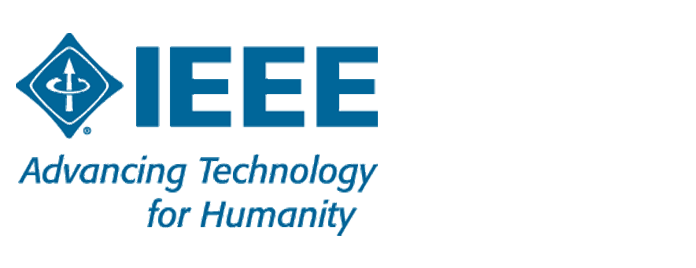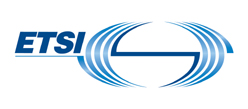IEEE 2200-2012 - IEEE Standard Protocol for Stream Management in Media Client Devices
Interfaces for intelligently distributing and replicating content over heterogeneous networks to portable and intermediate devices with local storage are defined.

Interfaces for intelligently distributing and replicating content over heterogeneous networks to portable and intermediate devices with local storage are defined.

Data messages, known as Protocol Data Units (PDUs), that are exchanged on a network among simulation applications are defined. These PDUs are for interactions that take place within specified domains called protocol families, which include Entity Information/Interaction, Warfare, Logistics, Simulation Management, Distributed Emission Regeneration, Radio Communications, Entity Management, Minefield, Synthetic Environment, Simulation Management with Reliability, Information Operations, Live Entity Information/Interaction, and Non-Real-Time protocol.

Ethernet local area network operation is specified for selected speeds of operation from 1 Mb/s to 400 Gb/s using a common media access control (MAC) specification and management information base (MIB). The Carrier Sense Multiple Access with Collision Detection (CSMA/CD) MAC protocol specifies shared medium (half duplex) operation, as well as full duplex operation. Speed specific Media Independent Interfaces (MIIs) allow use of selected Physical Layer devices (PHY) for operation over coaxial, twisted pair or fiber optic cables, or electrical backplanes. System considerations for multisegment shared access networks describe the use of Repeaters that are defined for operational speeds up to 1000 Mb/s. Local Area Network (LAN) operation is supported at all speeds. Other specified capabilities include: various PHY types for access networks, PHYs suitable for metropolitan area network applications, and the provision of power over selected twisted pair PHY types.(The PDF of this standard is available at no cost to you compliments of the IEEE GET program https://ieeexplore.ieee.org/browse/standards/get-program/page)

An extensible IEEE 802(R) media access independent services framework (i.e., function and protocol) is defined that enables the optimization of services including handover and other services when performed between heterogeneous IEEE 802 networks. These services are facilitated by this standard when networking between IEEE 802 networks and cellular networks. (The PDF of this standard is available at no cost compliments of the IEEE GET program http://ieeexplore.ieee.org/browse/standards/get-program/page/)

Physical (PHY) and media access control (MAC) layers of a broadband powerline communication technology for local area networks (LANs), Smart Energy, Smart Grid, Internet of Things, transportation platforms (vehicle) applications, and other data distribution are defined in this standard. The balanced and efficient use of the power line communications channel by all classes of BPL devices is the main focus of this standard, defining detailed mechanisms for coexistence and interoperability between different BPL devices, and ensuring that desired bandwidth and quality of service may be delivered. The necessary security questions are addressed to ensure the privacy of communications between users and to allow the use of BPL for security sensitive services.

This standard defines a vendor-independent set of policy-based control architectures and corresponding policy language requirements for managing the functionality and behavior of dynamic spectrum access networks.

Recommendations and guidance for distributed resources (DR) interconnected on the distribution secondary networks, including both spot networks and grid networks, are provided. This document gives an overview of distribution secondary network systems design, components, and operation; describes considerations for interconnecting DR with networks; and provides potential solutions for the interconnection of DR on network distribution systems. IEEE Std 1547.6-2011 is part of the IEEE 1547(TM) series of standards. IEEE Std 1547-2003 provides mandatory requirements for the interconnection of DR with EPSs and focuses primarily on radial distribution circuit interconnections. For DR interconnected on networks, all of IEEE Std 1547-2003 needs to be satisfied. IEEE Std 1547.6-2011 was specifically developed to provide additional information in regard to interconnecting DR with distribution secondary networks.

This standard defines a method for data sharing, interoperability, and security of messages over a network, where sensors, actuators and other devices can interoperate, regardless of underlying communication technology. The backend of such a globally scalable, secure and interoperable network would be based on the eXtensible Messaging and Presence Protocol (XMPP), and rely on infrastructural components, or bridges, with standardized interfaces that provide real-time conversion of other IoT and M2M protocols, such as those based on CoAP (Constrained Application Protocol), HTTP (Hypertext Transfer Protocol), MQTT (Message Queuing Telemetry Transport Protocol), AMQP (Advanced Message Queuing Protocol), etc., and other interoperability interfaces, such as those provided by the IEEE 1451 Smart Transducer Interface, oneM2M, OMA LWM2M (Open Mobile Alliance Lightweight M2M), OIC (Open Internet Connection), UPnP (Universal Plug and Play), IPSO (Internet Protocol for Smart Objects) Alliance, etc. The standard utilizes the advanced capabilities of the XMPP protocol, such as providing globally authenticated identities, authorization, presence, life cycle management, interoperable communication, IoT discovery and provisioning. Descriptive meta-data about devices and operations will provide sufficient information for infrastructural components, services and end-users to dynamically adapt to a changing environment. Key components and needs of a successful Smart City infrastructure will be identified and addressed. This standard does not develop Application Programming Interfaces (APIs) for existing IoT or legacy protocols.

Interfaces and service access points defined in IEEE Std 1900.4TM are described in detail, enabling distributed decision making in heterogeneous wireless networks and obtaining context information for this decision making.

The standard identifies gateways for field-bus networks, data storage for archiving and developing data sharing platforms, and application units as important system components for developing digital communities, i.e., building-scale and city-wide ubiquitous facility networking infrastructure. The standard defines a data exchange protocol that generalizes and interconnects these components (gateways, storage, application units) over the IPv4/v6-based networks. This enables integration of multiple facilities, data storage, application services such as central management, energy saving, environmental monitoring, and alarm notification systems.

Providing an estimation method for estimating the total energy consumption of a Mobile Network based on using small portion of data from same Network and statistically approach.

Many companies are running studies on estimating energy performance of future radio access networks (RAN) deployment. In this work item we want to find methods and best practice to assess energy performance (Energy Consumption, Energy Efficiency) of a future RAN deployment . The work will start with collecting important preconditions as traffic aspects (growth, new traffic classes, potential disruption), collection of energy efficiency/saving solutions and strategies and energy issues in current networks. Network energy performance will be assessed based on set of scenarios including different solutions. The time period is 2020, optionally beyond and 5G impact. Energy consumption and efficiency definitions from ES 202706 and ES 203228 are preferred.
